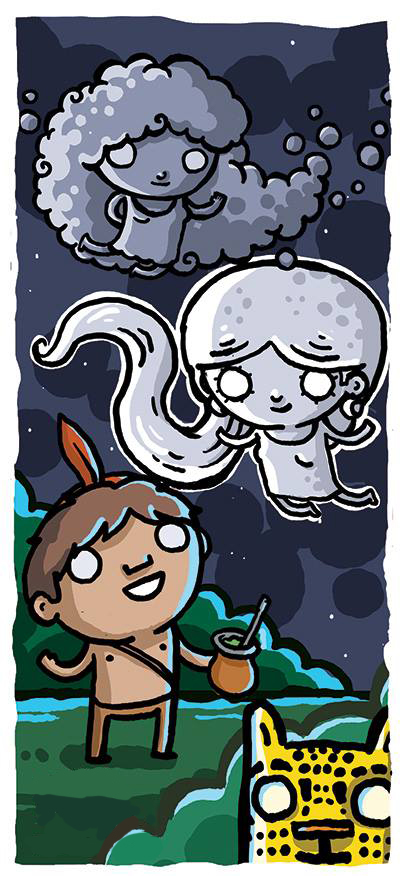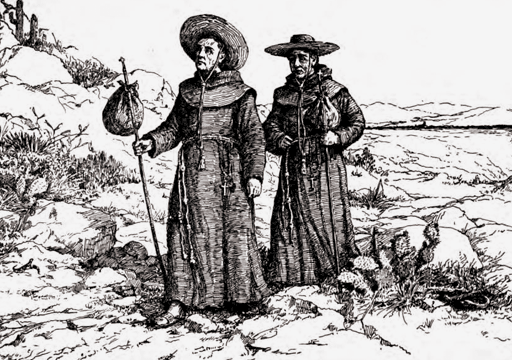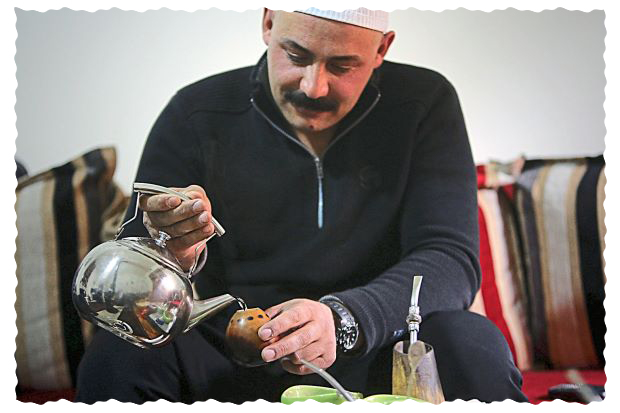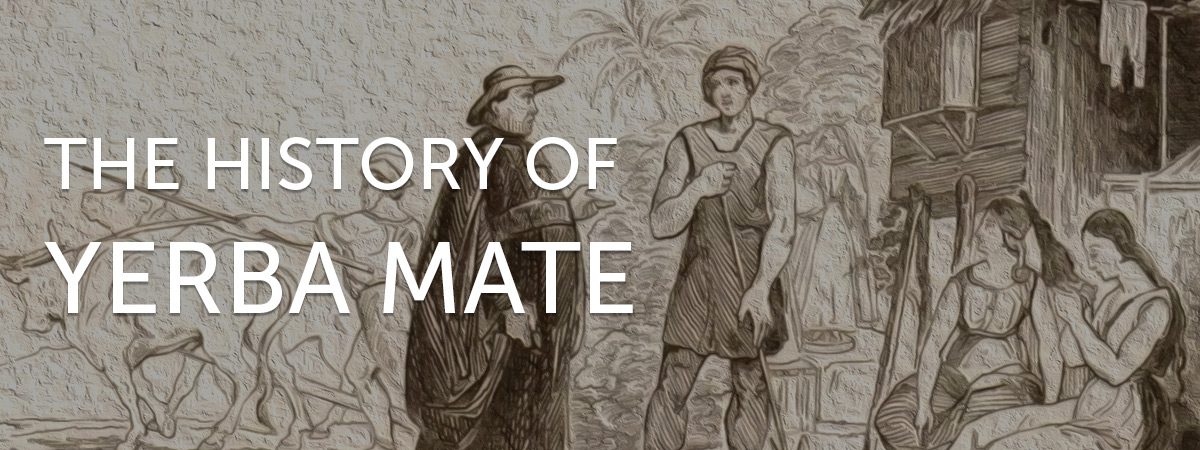Many caffeinated drinks and herbs were encountered during the colonial expansion by Europeans in America, Africa and Asia. However, very few of them became accepted for distribution and consumption in Europe and other parts of the world. These include cocoa, coffee, tea and mate as a late entrant to the list of beverages accepted and consumed in Europe and other parts of the globe.
The exciting and rich history of yerba mate makes it the most important caffeine drink, economically and medicinally. The tea, extracted from the leaves of Ilex paraguariensis, was traditionally consumed by the Guarani people for its medicinal value, longevity and vitality. In order to industrialize its production and distribution, a lot of findings had to be done by early Europeans in America, mainly the Spaniards. The history of yerba mate therefore dates back to the 16th century among native communities in Paraguay, Brazil, Uruguay and Argentina with undated legends about the precious herb.
Legends of Yerba Mate
Many people still seek to know how yerba mate was discovered and became a popular tea for many people across the world. Well, the discovery of the medicinal and refreshing value of mate is explained in three Guarani legends. Notable tales that tend to explain the beginning of mate preparation and use include the legend of Yari (the moon) in which it is believed that yerba preparation and drinking was taught to a native Guarani family by the goddess of the moon (Yari).
The second legend, commonly known as the legend of the Guarani, the Guarani people believed that yerba toasting and mate drinking would be introduced to native Guarani by a tall, bearded, fair-skinned God called Pa’ I Shume. In this legend, the prophesy comes to be when a shaman gifted an aging Guarani man with a green plant which he is taught to prepare. The man prepares the tea in a clay gourd, drinks it and ultimately regains new strengths. Together with his daughter, they track down his nomadic kinsmen who had long left.
The legend of the Tupi brothers shares a lot with the legend of the Guarani. After feuds and eventual division of the brothers, each group became a tribe. The Tupi tribe became more nomadic and fierce in nature while the Guarani tribe were God fearing, hospitable, skilled craftsmen and excellent at tilling the fertile land. They also looked forward to the coming of Pa’ I Shume who eventually appeared and unlocked for them the secrets of health and medicinal herbs. To them, yerba mate was a present from the spirit of Tupa for their hospitality and values.
In all the legends, the preparation of mate is the same. The leaves are harvested and dried on fire. The dry leaves are then ground and mixed with water in a gourd to produce a high quality fine infusion. This procedure has been adopted to commercially produce viable mate for export to Europe and the Middle East as well as for local consumption.
Yerba Mate Use By the Tupi and Guarani Tribes of South America
Initially, the Tupi of Southern Brazil and the Guarani of Northern Argentina consumed Yerba Mate as a sociocultural drink. It became the main object of ritual and worship hence its consumption was refreshing and fulfilling among the native American tribes. The Guaranis viewed the tea tree as the most precious tree in the forests, a tree from the gods.
In the early 1500s, however, the Tupi and the Guarani tribes widely consumed Yerba Mate for its medicinal value and as a stimulant. Among the two tribes, clay pots were commonly used as mate guards and special hollow twigs or reed bulbs used as the first bombillas. Occasionally, these indigenous people chewed the evergreen leaves during marches. It gave them the strength, energy as well as high spirits.
During this time, other native South American tribes had learned of this precious tea and the Guarani people began to use it as a medium of exchange for goods they did not have. The Charrua Araucanian and the Incas of Colombia got quality Yerba Mate from the Guaranis in exchange for a host of goods. In fact, this is notably the first time when yerba mate became a currency in the barter trade system!
In the beginning of the 17th century, Yerba Mate had dominantly become the main export commodity of the Indian Guarani people. Within the Guarani territories, Yerba Mate performed better than cocoa, sugar, tobacco and wine that had previously dominated the export market.

The Spaniards: Yerba Mate Discovery and Early Use
In 1526 Sebastian Cabot alias Sebastian Gaboto, an Italian voyager, while expediting for Spain, explored Rio del Plata in South America. He believed that at the source of Paran river on which he was sailing, there is a land endowed with silver and gold. Cabot was wrong but this does not mean that there were no treasures in the land along the rivers.
Instead of precious metals, Mother Nature gifted this land with an evergreen plant known to the natives as Caa. It was a gift from Yari (the goddess of the moon) and the holy spirit of Tupa. A precious plant of an equal commercial value to gold. This evergreen plant was later scientifically christened Ilex paraguariensis.
How did the Spaniards come to learn about Yerba Mate? Well, when the missionaries and colonial representatives first arrived in Villa Rica and Ciudad Real from Spain, like most colonialists then, they extensively explored the land for precious minerals. Disappointed that there was none, they fled leaving behind a small group which eventually settled along the Paran River. The native Guarani Americans amongst who they settled were hospitable, athletic, strong and healthy. The Spaniards sought to know the secret of this good health and learned, from the natives, that this was attributed to drinking the infusion of dried Caa leaves.
When most of the settlers adopted the habit of drinking Yerba Mate, they were surprised by the magical value of the tea. They had an improved physique, better health and uplifted spirit. More importantly, it boosted their commercial instincts. Towards the end of the 16th century, Yerba Mate was a favourite drink for native communities and settlers alike.
Yerba Mate, cultivated from wild strands, became a common beverage in South America. It spread so fast that in the beginning of the 16th century it was a common beverage in Paraguay, Colombia, Uruguay Brazil and Peru. The Spaniards and other settlers were not left behind either.
In the early years of the 17th century, the consumption of this tea spread so fast that it even surprised both church and colonial leaders. Early Spanish colonization of Paraguay and parts of South America was directly linked to the Jesuit mission and the Catholic Church in general. The mythical origin and ritualistic consumption of mate therefore developed great distrust from the Jesuits.
According to them, this was an evil drink which would hinder the spread of Christianity among the Indian communities. This led to a united opposition of the “demonic” drink which eventually led to its ban within their territories in 1616. The punishment against disobeying this decree was the harshest, excommunication.
This decree, and the branding of the drink as aphrodisiac by a Domitican priest, became detrimental to the church. Despite the decree and the branding, people continued to sip the widespread green gold. The church was therefore in the verge of losing its newly recruited faithful, contrary to what the Jesuits had in mind.
The Jesuits failed miserably to discourage or control Yerba Mate consumption and the ban was lifted as they could not compromise the growing numbers in the church. They therefore began to accept it and sanitized its earthly, pagan origin by substituting Tupa (Guarani holy spirit) for Santo Tome, Spanish for Saint Thomas. Changing the indecent history of the beverage created a closer link between Yerba Mate and the missionaries hence the herb is sometimes referred to as yerba missionera.
The Domestication and Commercialization of the Jesuit Tea

Yerba mate experienced rapid growth when its consumption was embraced by the Jesuits. They successfully requested the Spanish Crown to permit them to harvest and export quality Yerba Mate. Initially, they used the local Indians to harvest leaves from the wild strands in the forests.
To the Jesuits, the popularity opened the commercial potential of Yerba Mate and based on their policies which encouraged large scale farming, they began to domesticate Yerba Mate in large plantations for better economic prospects. Domesticating Yerba Mate was not an easy feat. It had been tried out unsuccessfully by contemporaries. Seeds that germinated were those that passed through the digestive systems of a bird or an emulation of such, a secret which the Jesuits kept to themselves.
Domestication of the herb began in 1650 through to 1670s. Despite the economic value brought about by higher production as well as creation and exploitation of commercial markets, Yerba Mate domestication as a plantation plant marked the darkest part of Yerba Mate’s history. With widespread consumption and rise in demand, Guarani Indians were brutally forced to clear the forests, water the mate plants, harvest the leaves and prepare Yerba Mate. It is still worth noting that no single industry has brutally practiced forced labour as was done by the Spanish contractors supervising Yerba Mate production.
The Jesuits produced quality mate which became a favourite for many, prompting the christening of Yerba Mate as the Jesuit Tea. Initially, they sold Yerba Mate purposely to cover basic taxes and necessities but not for profit. Yerba Mate joined maize, honey and tobacco as the key currencies. At the time, there were inadequate coins to trade with.
During the Jesuit era (1650-1767), the then commonly referred drink as the Jesuit tea was very popular that it became a basic beverage to all South American communities including the Gauchos and Chimarrao of Brazil.
The Post Jesuit Era: Yerba Mate Expansion and Industrialization
Despite the large plantations, high production and popularity of the Jesuit tea, Yerba Mate did not gain entry and acceptance in European markets. However, it is during the Jesuit era that Yerba Mate gained entry into high end homes of Europeans living in South America. When Carlos III expelled Jesuits from the missions in 1767, the mate plantations were abandoned and people went back to the old tradition of harvesting yerba from the wild strands in the forest.
The Bourbon Reforms of 1778 which allowed free trade within the Spanish empire and the Tax reforms of 1980 helped to open new markets for Yerba Mate and exportation to Europe through the Port of Concepcién. It gained entry and considerable acceptance in Spain, Portugal and Italy. This, however, was not comparable to the popularity of coffee, cocoa and tea had gained.
In 1819, French naturalist Augustine Saint-Hilaire gave yerba mate its scientific name, Ilex paraguariensis. Argentina became a major producer and exporter of mate alongside Brazil, Uruguay, and Paraguay. Yerba Mate exportation had since extended to Ukraine and Poland as well as parts of Eastern Europe and Asia.
Argentina, Uruguay and Brazil became key producers and exporters of Yerba Mate after the Paraguayan war which resulted into the loss of Yerba Mate rich land to Argentina and Brazil by Paraguay. It is at the same period that Yerba Mate drinking gained popularity in Chile and the rest of South America.
Argentine Yerba Mate production dwindled towards the end of the 19th century but recovered immensely in the beginning of the 20th century. For example, the Misiones Province produced a meager 1,000 tonne in 1898 and recovered massively to produce 20, 000 tonnes in 1929. This consistent increase made Argentina the chief producer and exporter of Yerba Mate.
Around the same time, many people from Poland and Ukraine emigrated to South America due to the dire economical situation in Eastern Europe. Through them, Argentina was able to spread and market Yerba Mate culture to East Europe. This opened a new market for Argentine Yerba Mate in Poland and Ukraine. To this day, Yerba Mate remains a popular drink in the two countries.
Yerba Mate in the Middle East
Contrary to the knowledge of many people, it is common to see mate (gourds) in the Middle East, particularly in Syria and Lebanon. Yes, mate is widely consumed in the Middle East. But how did Yerba Mate get to the Middle East?
The history and tradition of Yerba Mate in the Middle East dates back to 1860 when the first Arab immigrants arrived in South America. It is also at the same time that Pedro II, the then Brazil Emperor, visited present day Lebanon. After his visit, he arranged and facilitated the immigration of more Arabs to the region where today the modern borders of Brazil, Argentina and Paraguay sit.
At about the same time, too, many Lebanese and Syrian immigrants made their own way to South America to escape the escalating persecution of Arabs by the Ottoman Turks. These Arabs were registered as Turks. The dramatic influx of the Arabs in Argentina increased in 1940 during World War II when Lebanese and Syrian Arabs were enlisted to fight for France, their then colonial master.
The discovery of oil in Arab countries and the unstable economic situation in most South American nations (circa 1970s) prompted most Arab immigrants to go back to their countries of origin. With them, they carried the mate culture which has since been practised by the Druze and other communities of Syria and Lebanon.
Before the war, Syria was the main importer of the Argentine Yerba, importing up-to 15, 000 tonnes annually. Despite the war, Syria still imports a considerable amount of Yerba Mate while Lebanon has consistently remained a destination for Argentine Yerba.

Conclusion
Yerba mate has a fascinating rich history. Its consumption has transitioned from God-given drink to an outlawed dirty, punishable vice and finally to a valuable recommended beverage with invaluable health benefits. Besides the traditions, scientists have since proven that drinking yerba mate has a lot of health benefits including disease prevention and weight loss. The best way of drinking yerba mate is still through a mate gourd coupled with a bombilla. However, it can also be enjoyed as tea bags or in French presses for more convenience.

